
Journal of Mathematical Fluid Mechanics
Scope & Guideline
Innovating Fluid Dynamics with Mathematical Precision
Introduction
Aims and Scopes
- Mathematical Analysis of Fluid Dynamics:
The journal publishes research that rigorously analyzes equations governing fluid motion, such as the Navier-Stokes and Euler equations, including existence, uniqueness, and regularity of solutions. - Numerical Methods and Simulations:
It emphasizes the development and application of numerical methods for solving fluid dynamics problems, including finite element methods, spectral methods, and computational fluid dynamics (CFD) techniques. - Applications to Real-World Problems:
Research often connects theoretical findings to practical applications in various fields, including meteorology, oceanography, and engineering, addressing complex phenomena such as turbulence, multiphase flows, and magnetohydrodynamics. - Interdisciplinary Approaches:
The journal encourages interdisciplinary studies that incorporate mathematics, physics, and engineering principles to tackle fluid mechanics problems, fostering collaboration across disciplines.
Trending and Emerging
- Fluid-Structure Interaction:
There is a growing interest in the interaction between fluids and structures, particularly in the context of flexible or moving boundaries, which is critical for applications in biomedical engineering and materials science. - Magnetohydrodynamics (MHD):
Research related to magnetohydrodynamics, particularly in the context of astrophysical and geophysical flows, has seen a rise, reflecting its importance in understanding plasma physics and the behavior of electrically conducting fluids. - Multiscale and Complex Fluids:
Emerging studies are focusing on multiscale modeling approaches that address complex phenomena such as turbulence, phase transitions, and interactions in multiphase flows, highlighting the need for comprehensive understanding in various applications. - Stochastic Fluid Dynamics:
The integration of stochastic processes in fluid dynamics is gaining traction, with researchers exploring the effects of random fluctuations and uncertainties in fluid behavior, particularly in environmental and industrial applications.
Declining or Waning
- Nonlinear Stability Analysis:
Though still relevant, the frequency of papers specifically addressing nonlinear stability problems has decreased, possibly due to a shift towards exploring more complex fluid interactions and numerical simulations. - Classical Fluid Mechanics Models:
There appears to be a waning interest in classical models without significant modifications or extensions, as researchers increasingly focus on more complex systems that incorporate additional physical effects. - Simplified Models for Fluid Dynamics:
The publication of papers focused on overly simplified or idealized fluid models has declined, indicating a preference for more nuanced approaches that capture real-world complexities.
Similar Journals

Applications of Mathematics
Advancing the Frontiers of Applied MathematicsApplications of Mathematics, published by SpringerNature, is a respected journal based in the Netherlands that provides a platform for innovative research in the field of applied mathematics. Since its inception in 1997 and with a convergence ongoing until 2024, the journal supports the dissemination of high-quality scholarship, although it currently holds a Q4 category ranking in the applied mathematics category, which reflects its niche importance in the academic community. Researchers and professionals in the field can access a diverse array of applied mathematical techniques and their practical applications, contributing to advancements across various disciplines. While the journal does not operate under an open access model, it is indexed and ranked in Scopus, where it holds a rank of 419 out of 635, placing it in the 34th percentile. This underscores its value and relevance in the global research landscape.
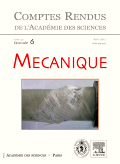
COMPTES RENDUS MECANIQUE
Unveiling Innovations in Mechanics for a Global AudienceCOMPTES RENDUS MECANIQUE, an esteemed journal published by the Académie des Sciences, serves as a critical platform for cutting-edge research in the fields of mechanics and materials science. With an ISSN of 1631-0721 and an E-ISSN of 1873-7234, this open-access journal has gained visibility since its transition to open access in 2020, encouraging a broader dissemination of knowledge within the community. As of 2023, it holds a Q3 ranking in both the Materials Science (Miscellaneous) and Mechanics of Materials categories, according to category quartiles. Given its Scopus rankings—299th out of 398 in Mechanics of Materials and 360th out of 463 in General Materials Science—it provides valuable insights and advancements in these disciplines. Located in Paris, France, the journal caters to researchers, professionals, and students alike, showcasing a diverse range of studies and developments that push the boundaries of knowledge in mechanics. Through its accessible format, COMPTES RENDUS MECANIQUE not only highlights significant findings but also promotes collaboration and innovation across the global scientific community.
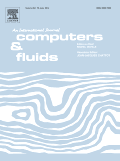
COMPUTERS & FLUIDS
Pioneering Research at the Intersection of Technology and Fluid MechanicsCOMPUTERS & FLUIDS, published by PERGAMON-ELSEVIER SCIENCE LTD, is a premier journal in the fields of Computer Science and Engineering, with a distinguished history dating back to 1973. Its Q1 ranking in both Computer Science (Miscellaneous) and Engineering (Miscellaneous) illustrates its high impact and relevance, being positioned among the top tier of scientific publications. With a robust focus on the intersection of computational methods and fluid dynamics, this journal serves as a vital platform for researchers, professionals, and students dedicated to advancing knowledge and technology within these domains. Although it is not an open-access journal, its articles are accessible through various academic institutions and libraries, ensuring that vital research reaches its intended audience. Readers can explore innovative methodologies and applications, reinforcing the journal's commitment to enhancing the understanding of fluid mechanics through cutting-edge computational approaches. For more details, visit the official website of COMPUTERS & FLUIDS to stay abreast of the latest research advancements.
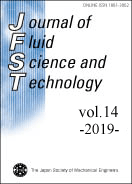
Journal of Fluid Science and Technology
Pioneering Research in Fluid Science and TechnologyThe Journal of Fluid Science and Technology, published by the Japan Society of Mechanical Engineers, serves as a pivotal platform for the dissemination of cutting-edge research in the fields of fluid mechanics and mechanical engineering. With an ISSN of 1880-5558, this Open Access journal has been dedicated to advancing the understanding of fluid flow and transfer processes since its establishment. As of 2023, it holds a significant position with a Q3 quartile ranking in both Fluid Flow and Transfer Processes and Mechanical Engineering categories. Researchers and practitioners are encouraged to explore the journal’s extensive collection of articles, contributing to the body of knowledge that impacts various practical applications in engineering and technology. The journal, which has established a reputation for quality amidst a competitive landscape, further fosters international collaboration and education by providing unrestricted access to its content. For professionals and students alike, the Journal of Fluid Science and Technology represents an invaluable resource for the latest findings and innovations in fluid dynamics and mechanical systems.
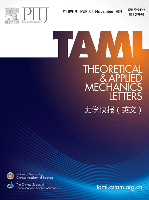
Theoretical and Applied Mechanics Letters
Advancing Engineering Knowledge Through Theory and PracticeTheoretical and Applied Mechanics Letters, published by ELSEVIER, stands as a premier journal in the field of engineering and applied mechanics, recognized for its rigorous peer-reviewed articles that advance theoretical and practical frameworks. With an impressive open access policy established in 2015, the journal enhances global accessibility to cutting-edge research across a range of disciplines including Aerospace, Civil, Mechanical, and Biomedical Engineering, along with Computational Mechanics and Ocean Engineering. The journal boasts an enviable position in the academic landscape, achieving a Q1 rank in several categories as of 2023, while being cited among the top percentiles in Scopus Ranks, specifically ranking #25 in Aerospace Engineering and #15 in Computational Mechanics. The journal aims to foster innovation by providing a platform for scholars and professionals to disseminate their findings, thereby bridging the gap between theoretical research and practical applications. By promoting a diverse range of topics and methodologies, Theoretical and Applied Mechanics Letters not only contributes to the advancement of engineering disciplines but also supports the global academic community in exploring sustainable and impactful engineering solutions.

Communications in Analysis and Mechanics
Advancing mathematical frontiers through collaborative research.Communications in Analysis and Mechanics is a pioneering journal published by the AMER INST MATHEMATICAL SCIENCES (AIMS), dedicated to advancing the fields of mathematics, engineering, and applied sciences. With its recent transition to Open Access in 2023, the journal aims to enhance the dissemination of high-quality research by fostering a collaborative environment for researchers, professionals, and students. Operating from the United States, this journal embraces a broad scope encompassing geometry, optimization, and mechanics, ensuring a comprehensive platform for innovation and critical discourse. Despite its nascent status, it features competitive Scopus rankings in various disciplines, notably achieving a percentile around 7th to 13th, indicative of its growing impact among peers. The editorial team is committed to publishing original research that addresses significant challenges and developments within the mathematical sciences, facilitating a vital exchange of ideas and methodologies.

THEORETICAL AND COMPUTATIONAL FLUID DYNAMICS
Innovating Fluid Mechanics Through Rigorous Research.THEORETICAL AND COMPUTATIONAL FLUID DYNAMICS, published by SPRINGER, stands at the forefront of scientific discourse in the fields of fluid mechanics and computational methods. With an impressive impact factor reflecting its significance and reach, this journal has consistently maintained a Q1 ranking across multiple categories, including Computational Mechanics and Condensed Matter Physics as of 2023. Covering a rich scope of theoretical research and computational analysis, it aims to advance the understanding of fluid flow and transfer processes, making it an essential resource for researchers, professionals, and students alike. The journal, with its historical archive extending from 1989 to 2024, not only contributes to foundational theories but also integrates applied research and emerging computational techniques, thus facilitating innovation within the discipline. As a result, THEORETICAL AND COMPUTATIONAL FLUID DYNAMICS serves as a crucial platform for disseminating impactful findings that shape future advancements in fluid dynamics research.
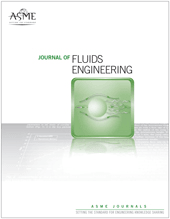
JOURNAL OF FLUIDS ENGINEERING-TRANSACTIONS OF THE ASME
Unveiling Insights in Thermal and HydrodynamicsJOURNAL OF FLUIDS ENGINEERING-TRANSACTIONS OF THE ASME, published by the renowned American Society of Mechanical Engineers (ASME), stands as a pivotal platform for disseminating cutting-edge research in the field of mechanical engineering, specifically focusing on fluid mechanics and its diverse applications. With an established history dating back to 1897, this journal features research that pushes the boundaries of knowledge and technology in areas such as fluid dynamics, thermal engineering, and hydrodynamics. Although it is not an open-access journal, it maintains rigorous peer-review standards, ensuring the publication of high-quality scholarly articles that contribute to the academic and professional community. In the latest rankings, it holds a respectable position within the Q2 category of mechanical engineering journals, reflecting its significant impact, as evidenced by its Scopus rank of #204 out of 672, placing it in the 69th percentile. Researchers, professionals, and students alike will find this journal to be a vital resource for the latest developments and innovative insights in fluids engineering.

COMPUTATIONAL MATHEMATICS AND MATHEMATICAL PHYSICS
Empowering Researchers with Rigorous Insights in Mathematics and PhysicsCOMPUTATIONAL MATHEMATICS AND MATHEMATICAL PHYSICS is a prestigious journal published by PLEIADES PUBLISHING INC, dedicated to advancing the fields of computational mathematics and mathematical physics. With an ISSN of 0965-5425 and an E-ISSN of 1555-6662, the journal has established its importance within the academic community since its inception in 1985. It is classified in the third quartile (Q3) for computational mathematics in 2023, and while currently it does not offer open access options, it remains a valuable resource for researchers seeking to disseminate their findings and engage with cutting-edge developments in the field. The journal encompasses a broad spectrum of topics, including numerical analysis, applied mathematics, and the intersection of physics and computational techniques, highlighting its relevance in addressing complex problems in both theoretical and applied contexts. Scholars will find a platform that not only promotes rigorous research but also encourages collaboration and innovation within the scientific community.

Applied Mathematics-A Journal of Chinese Universities Series B
Empowering Researchers to Transform Mathematical ApplicationsApplied Mathematics-A Journal of Chinese Universities Series B is a reputable journal published by ZHEJIANG UNIV PRESS, dedicated to advancing the field of applied mathematics. With an ISSN of 1005-1031 and an E-ISSN of 1993-0445, this journal has consistently provided an insightful platform for researchers to publish innovative studies, theoretical advancements, and practical applications that bridge the gap between mathematics and real-world problems. Operating under the rigorous academic standards characteristic of its category, the journal currently holds a Q4 quartile rank in Applied Mathematics and is positioned at the 30th percentile among its peers in Scopus rankings. Encompassing a publication range from 1993 to 2024, it promises to foster collaboration and knowledge exchange among mathematicians and interdisciplinary scholars, ensuring that high-quality research reaches a global audience. Although the journal follows a traditional access model, its significance in the academic community lies in its commitment to facilitating the dissemination of critical mathematical findings that address complex contemporary issues.